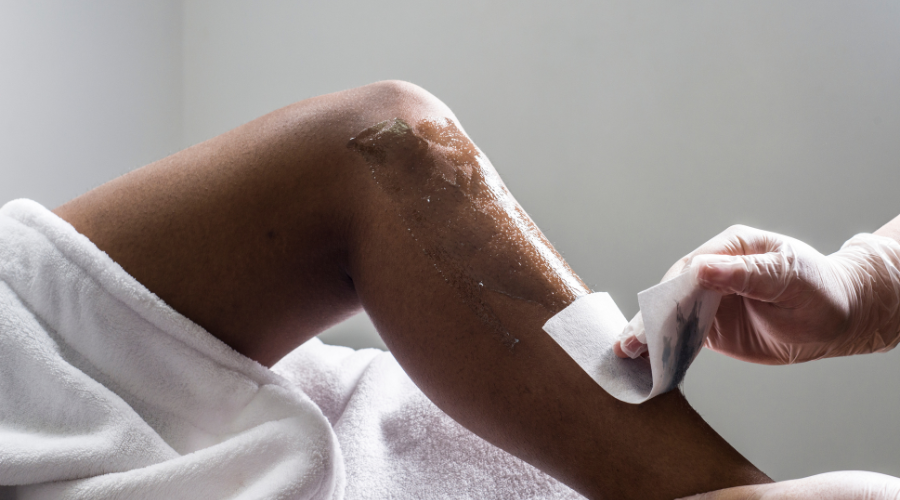Have you ever looked in the mirror and noticed those pesky hairs on your upper lip or chin that just won't go away? Shaving leaves your skin irritated and red. Waxing at the salon can be crazy expensive.
Turns out our ancestors had a natural solution thousands of years ago - sugar wax!
This simple hair removal technique using sugar, lemon, and water was gentler on sensitive skin than the blades and chemicals we use today. In this article, we'll explore the history of Egyptian sugar wax and how you can make your own at home. Your skin will thank you for turning to the past for this sweet, soothing hair removal treatment.
The Origins of Sugar Wax in Ancient Egypt
The ancient Egyptians were pioneers in beauty and grooming. Around 4000 years ago, they created a natural hair removal method using sugar, lemon juice, and water that worked even on sensitive areas of the body. This early form of sugar waxing was a gentler alternative to painful plucking and shaving.
To make the sugar wax, Egyptians heated sugar and water until molten, then added lemon juice. The acidic lemon juice caused the sugar syrup to harden into a sticky wax-like substance as it cooled. They would apply the sugar wax directly to the area of unwanted hair growth and then quickly rip it off, pulling the hair from the roots with little irritation. The lemon juice acted as an astringent, tightening pores and dulling pain.
Sugar waxing has endured for centuries because it is:
- Natural and non-toxic: Made from food-grade ingredients, sugar wax is gentle and safe for sensitive skin.
- Effective: It removes hair from the roots for smooth, hair-free skin that lasts for weeks. Repeated use can even reduce hair growth over time.
- Gentle: Sugar wax adheres only to the hair, not the skin. It causes little redness or discomfort, even on delicate areas. The natural ingredients are soothing and moisturizing.
- Eco-friendly: Sugar wax is biodegradable, compostable and creates no waste or pollution. The leftover wax can simply be washed away with water.
- Inexpensive: Sugar, water and lemon juice are affordable ingredients. Homemade sugar wax costs almost nothing to make and salon sugar waxing is very budget-friendly.
No wonder the ancient Egyptians were such proponents of sugar waxing. They recognized its benefits for beauty, comfort and sustainability thousands of years before modern cosmetic science caught up. Talk about being ahead of the curve!

What Is Sugar Wax and How Is It Made?
Sugar wax is an all-natural hair removal method that uses a sticky wax made of sugar, water, and lemon juice. The ancient Egyptians were making and using sugar wax as far back as 3000 BC. They discovered that heating sugar and water to a thick, honey-like consistency and then applying it to the skin was an effective way to remove unwanted hair.
- To make sugar wax, combine two cups of sugar, one-quarter cup of lemon juice, and one-quarter cup of water in a saucepan.
- Heat the mixture over medium heat, stirring frequently until it reaches 240 degrees Fahrenheit.
- Remove from heat and continue stirring for a couple of minutes as it cools and thickens to a wax-like consistency.
- Test the wax on your wrist to ensure it's not too hot before applying to the desired area.
- Apply in the direction of hair growth using a tongue depressor or popsicle stick and then pull off quickly in the opposite direction.
Sugar wax is ideal for those with sensitive skin since it's all-natural and chemical-free. It removes hair from the roots while exfoliating the skin. Regrowth also tends to be softer and sparser compared to shaving. The lemon juice helps lighten the hair over time, and the wax itself moisturizes as it removes hair.
With some practice, you'll be giving yourself professional-level sugaring treatments right at home and enjoying smooth, touchable skin with this ancient, all-natural hair removal method. Your skin will thank you for it!
Why Sugar Wax Is Ideal for Sensitive Skin
Sugar wax is a gentle hair removal method that’s perfect for sensitive skin. Unlike harsh waxing techniques that tear hair from the roots, sugar waxing lifts hair from the follicles with minimal discomfort. It’s also less irritating than depilatory creams, which can cause redness and rashes.
Sugar wax is made from just two ingredients: sugar and lemon juice or water. These natural ingredients are non-toxic, hypoallergenic, and suitable for most skin types. Even those with sensitive skin or conditions like eczema, rosacea, or keratosis pilaris can benefit from sugar waxing without adverse effects.
Minimal Pain
The sugar in the wax sticks to the hair, not the skin, so it removes hair without pulling at the skin. This results in less pain compared to traditional waxing methods. The lemon juice in the wax also acts as a natural antiseptic, soothing the skin. Many people find sugar waxing less painful and irritating than other hair removal techniques, with minimal redness or swelling.
Exfoliates and Moisturizes
As hair is removed, sugar waxing also exfoliates the top layer of skin, leaving it soft and smooth. Sugar is a natural humectant, meaning it attracts moisture to the skin. So, sugar waxing moisturizes while removing unwanted hair. Regular sugar waxing can improve skin texture over time.
Long-Lasting Results
Like other waxing methods, sugar waxing provides long-lasting smoothness. Hair regrowth can take 3 to 6 weeks, and repeated treatments may lead to sparser hair growth over time. The more you wax, the less hair grows back. For the most effective results, exfoliate the area regularly and moisturize daily, especially after showering while your pores are open.
With its natural ingredients and skin-friendly properties, sugar waxing is an excellent option if you have sensitive skin and want smooth, hairless skin without irritation. Give this ancient Egyptian method a try—your skin will thank you!
FAQs About Using Sugar Wax on Sensitive Skin
Is sugar waxing safe for sensitive skin?
Yes, sugar waxing is very gentle and safe for sensitive skin. The all-natural ingredients in sugar wax, like sugar, water and lemon juice, are non-irritating. Sugar waxing also only sticks to the hair, not the skin. This helps prevent inflammation and irritation that can come from waxing.
Will sugar waxing sting or burn?
Sugar waxing may cause minor stinging for a few seconds when the wax is applied and removed. However, it is usually not painful and does not burn the skin. The stinging sensation comes from the hair being pulled from the follicle, not from irritation of the skin. The stinging should subside quickly after the hair is removed. Those with sensitive skin may experience slightly more discomfort, so you can apply a numbing agent to the area first to minimize any stinging.
How can I reduce irritation from sugar waxing?
There are a few tips to help prevent irritation from sugar waxing:
- Exfoliate the area before waxing to remove dead skin cells. This will allow for a closer wax and less pulling of the skin.
- Apply a cold compress such as aloe vera gel or hydrocortisone cream after waxing to soothe the skin and reduce inflammation.
- Avoid sun exposure and tanning beds for 24-48 hours after waxing. Sun exposure can further irritate sensitive skin.
- Use fragrance-free and hydrating products for 24-48 hours after waxing. Avoid harsh skincare products that can strip or dry out the skin.
- Take an over-the-counter oral antihistamine, such as Benadryl, before waxing to reduce inflammation and sensitivity.
Sugar waxing is not only inexpensive and easy to make at home, but it's gentle on even the most sensitive skin. With just sugar, lemon juice, and water, you can say goodbye to painful waxing and irritated skin.
Give it a try for yourself - you just might find your new go-to for easy, pain-free hair removal. And you'll feel like Cleopatra herself as you experience this beauty ritual passed down through the centuries. Who knew such a sweet solution was right there in your pantry all along?




